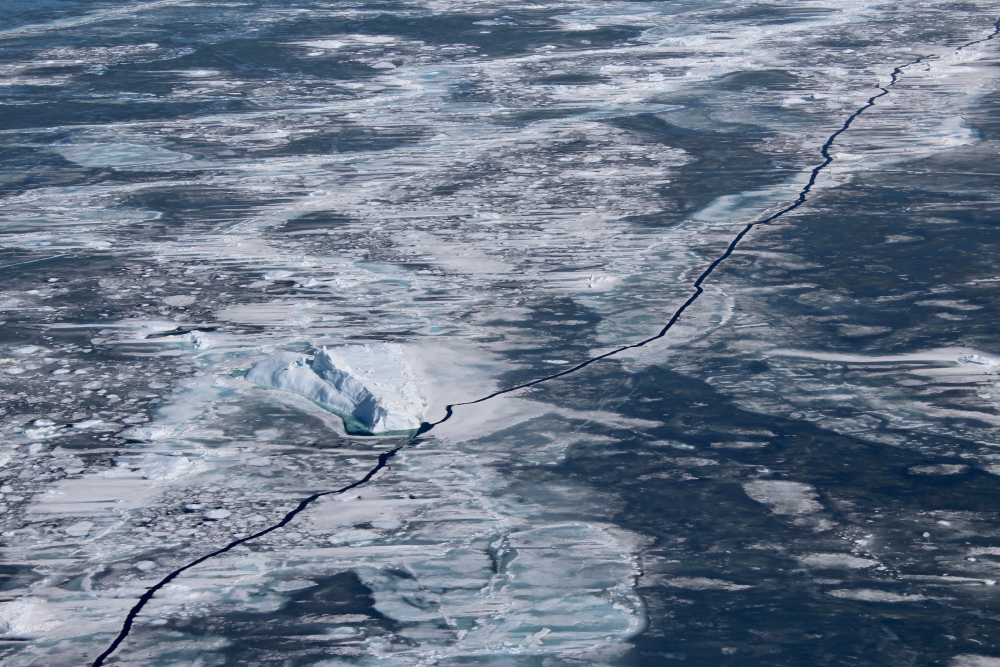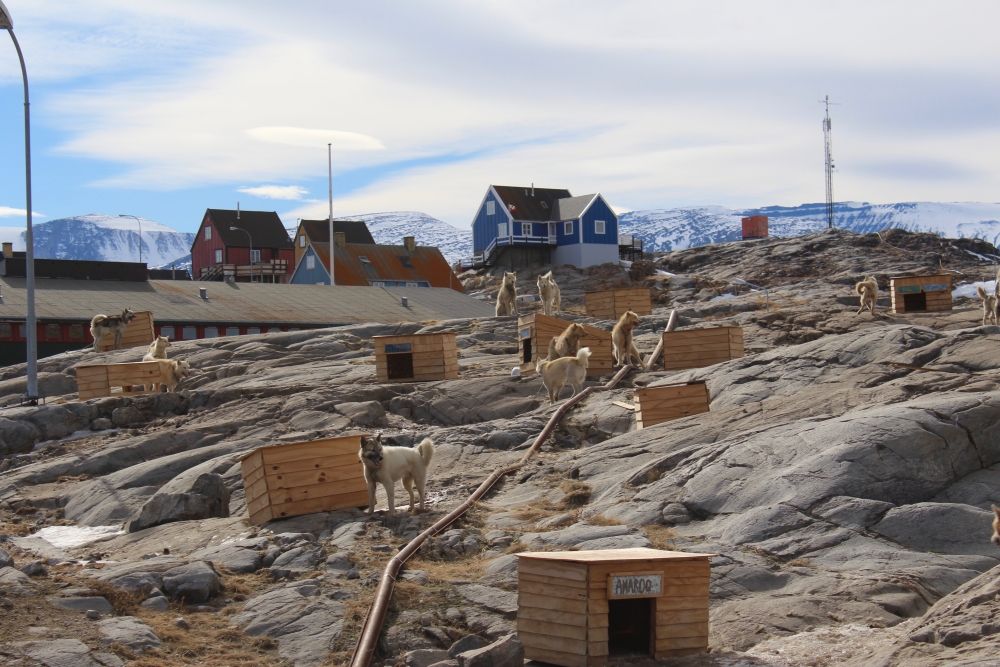Now, Postdoctoral Research Associate in Environment and Society Johnny Ryan and colleagues are combining cutting-edge remote sensing techniques with innovative social science techniques to understand not only the changing behavior of fjord ice, but how these changes affect those who rely on it for daily life.

Their research centers on a place called Uummannaq, a small town in northwest Greenland. Fjord ice there, and in other regions of the Arctic, has been largely ignored by scientists due to technological limitations.
"When scientists study sea ice, they tend to rely on coarse satellite imagery—like 25x25 km2," he says. "But that imagery cannot identify the presence, or absence, of ice within a fjord that is only 5 km wide."
Sophisticated new satellites, such as Planet Labs' CubeSat constellation, which can resolve features as small as 10 meters in diameter, are starting to overcome these constraints. Ryan's mentor, IBES fellow Laurence C. Smith, runs a lab group that specializes in using such high-resolution imagery to investigate changes in Arctic surface water. But, as Ryan explains, even the sharpest images are limited in their ability to explain what is happening on the ground.

"Right now, we're still only looking at a 2D surface and not able to get much information about the fjord ice thickness or the processes that are causing it to break up," he says. "We're raising all these new questions, which can't necessarily be addressed with just satellite imagery."
But by working with locals in the community, Ryan's social science colleagues, IBES Director Amanda Lynch and Honorary Professors of Environment and Society Brigt Dale and Siri Veland, will introduce another potent source of information about changes in Arctic shorefast ice.
"Our plan is to go to Uummannaq with our scientific knowledge from satellite imagery, and try to understand how well it agrees with local knowledge," says Ryan. "In this way, they can help direct our future research—but then we can also tailor our scientific research so that is useful to people who live in Uummannaq."
The Smith Lab is known for its expertise in capturing real-time images of Arctic ice with drones; but on this field expedition, Ryan and his team hope to get even more out of such technology by sharing it.
"We want to give something back to the community, and we thought a good way of doing this would be to work with the local children. Some of them already have drones, but getting them familiar with photography and filmmaking and those sort of skills would be really cool," he says. "They live in such an amazing environment. If they were documenting some of the environmental change happening on their doorstep, it would be a pretty powerful way of communicating how climate change is affecting these communities."

Ryan and the team are hopeful that their unique IBES-derived blend of natural and social science research, together with insights from residents of Uummannaq, will provide a novel, robust, and innovative perspective on changes in Arctic sea ice.
"By using this knowledge from all these different sources—from people in interviews, from satellites, and from drones—hopefully we can understand more about the system," he says. "And if we understand more about the system, we can start to make predictions about how it will respond as the climate warms."
Their work represents a new paradigm in climate science.
"There's a huge pool of knowledge that is contained in people's minds," he says. "If you put the effort in to go and collect this information and work with local communities in a way that is mutually beneficial, I think there is a lot of opportunity to actually understand some of these environmental systems in ways that we've never been able to do before."